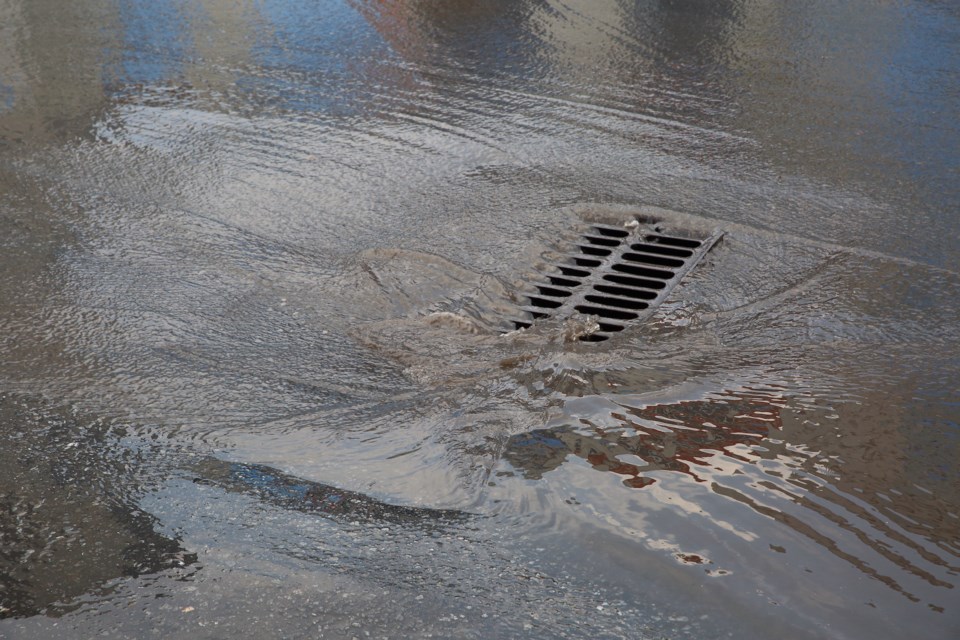About a third of Collingwood’s treated drinking water is used to flush toilets.
However, Mayor Brian Saunderson is pushing for developers proposing new projects in Collingwood to rethink that model.
On Monday night, council unanimously approved a motion put forward by Saunderson to have staff prepare a report on how the town can work with developers to implement and install stormwater harvesting systems in new developments. Such systems are used to capture and use grey water (stormwater) to flush toilets and for other household uses, which reduces pressures on municipal infrastructure and can reduce the impact of flood events.
“I want all future developments in town to look at installing stormwater harvesting systems,” Saunderson told CollingwoodToday.ca last week.
“If you do it proactively, before the pipes get laid in the ground, it’s not a very expensive add-on. That technology is already out there and can be used quite simply, and it’s just a matter of working with our development community to spread that knowledge.”
Saunderson said he first heard about the possibilities in a meeting with the local engineering community.
“That’s when I found out a third of our water is used to flush toilets,” he said. “Something like stormwater harvesting could be a way to work around that. We could extend our (treated) water by 30 per cent.”
In speaking with town staff, Saunderson said he found that the town has a manual that can be provided upon request to homeowners on how to retrofit their homes to allow for stormwater harvesting, however each retrofit does come with a cost. If stormwater harvesting systems are included in plans before a shovel hits the ground, the cost significantly drops.
The benefits of stormwater harvesting can include a reduction in water bills as well as improving ecosystem health and reducing river and stream erosion.
According to the town’s manual, on average, Collingwood receives 700 millimetres of rainfall annually. Based on this average rainfall, a typical four‐person household in Collingwood with roof area of 120 square metres can save up to 55,000 litres of water by using rainwater for both indoor and outdoor use.
Permitted uses for stormwater in Collingwood include toilets, urinals, garden hoses, irrigation systems or washing machines.
In April 2021, an interim control bylaw was passed by Collingwood council after staff announced the current water treatment plant could not produce enough drinking water to meet the expected demand caused by growth over the next five years leading up to the planned expansion of the plant. The town is currently working its way through approvals for a new servicing capacity allocation framework to take effect after the control bylaw is lifted which will protect the town’s water supply until the new plant comes online, which is expected by 2026.
“It’s a way for us to make a positive move forward. The water capacity issue has been a significant one for this town and we could be at the forefront of technology and stormwater management,” said Saunderson.
Town staff are currently working on their Stormwater Management Master Plan, the first phase of which was discussed during a council meeting in February.
The report outlines varying worst-case scenario storm situations and how the existing town infrastructure would handle them. The information will be used to identify which areas of Collingwood most immediately need work done to mitigate flood risks.
The next steps of the plan include the town identifying priority projects to address deficiencies projected by the modelling. The estimated cost of this next step – $225,000 – was included in the 2022 operating budget.
With Saunderson’s motion, he’s hoping to get the ball rolling on stormwater harvesting as a method to mitigate future stormwater damage town-wide while also preserving the town’s treated water supply.
“Once staff comes back and council can have input, we can work with developers to make stormwater management and harvesting an issue. Under our water allocation policy, there are sustainability and climate change issues. This could be one of those aspects,” he said.
At Monday’s meeting, council voted unanimously in favour of directing staff to prepare a report on the matter.



